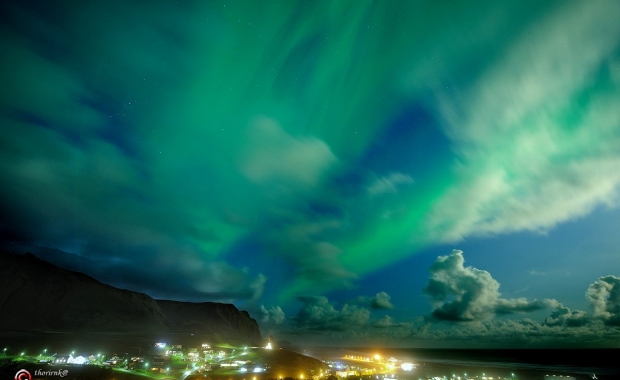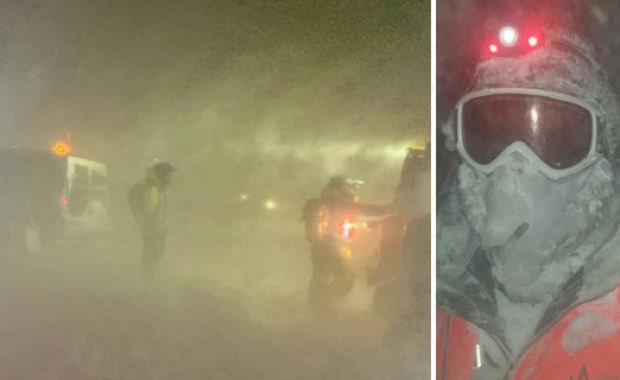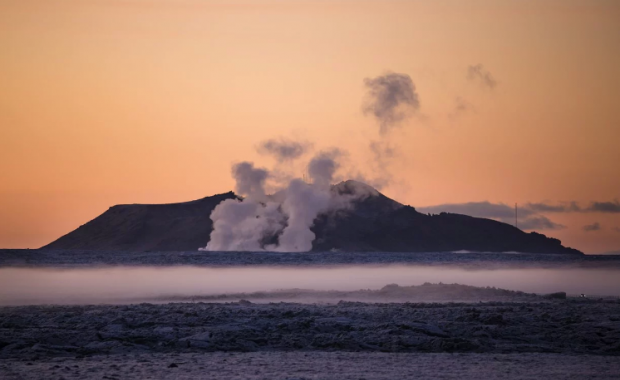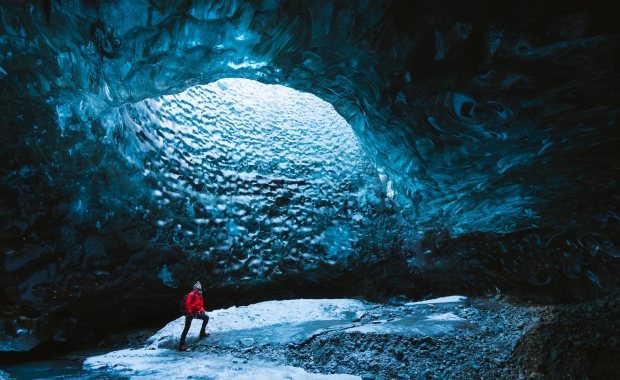While many lament the end of summer and onset tof the fall and winter, Aurora lovers rejoice the turn of the seasons, as the longer nigghts of winter bring with them a chance to view nature's most spectacular show.
Spectacular Northern Lights
Yesterday the Northern Lights graced us with a burst of spectacular activity. The Aurora was visible in all parts of Iceland where the skies were clear, everywhere from Reykjavík to the village of Vík in South Iceland. The full moon added to the spectacular view of the night sky.
Read more: Powerful Aurora activity predicted over Iceland on Wednesday evening
In case you missed yesterday's show you still have a great chance to catch a magnificient display on Wednesday, when a major coronal mass ejection will hit the magnetic field, bringing with it a potentially spectacular Aurora display. You can also check out these photographs caught by a local phtographer Þórir Kjartansso. Þórir photographed the Aurora over Vík shortly after midnight, as well as a rare photo of a lunar rainbow, a moonbow, over Dyrhóley peninsula.
The full moon and mist produced an unusually vibrant moonbow:

Lunar rainbows are formed in exactly the same way as regular rainbows, except they are formed by moonlight. The fact that moonlight is much fainter than sunlight, and that it is dark at night makes it very hard to see lunar rainbows. Their colours are also usually too faint to note, making them look white. Therefore lunar rainbows are sometimes also called white rainbows. However, the colours always appear in long exposure photographs.
Lunar rainbows are most likely to be seen at or near a full moon, when the brightness of the moonlight is greatest. For a moonbows to appear the moon must be low in the sky, and the sky very dark. This means a moonbow is best observed 2 to 3 hours before sunrise or 2 to 3 hours after sunset. Finally, for a moonbow to appear there needs to have rain or mist in the opposite direction in the sky from the moon.
Þórir has been documenting the Aurora over South Iceland for years now. Below you can view a compilation video of his amazing photos:
Aurora Borealis in the south coast, Iceland from thorirnk on Vimeo.
While many lament the end of summer and onset tof the fall and winter, Aurora lovers rejoice the turn of the seasons, as the longer nigghts of winter bring with them a chance to view nature's most spectacular show.
Spectacular Northern Lights
Yesterday the Northern Lights graced us with a burst of spectacular activity. The Aurora was visible in all parts of Iceland where the skies were clear, everywhere from Reykjavík to the village of Vík in South Iceland. The full moon added to the spectacular view of the night sky.
Read more: Powerful Aurora activity predicted over Iceland on Wednesday evening
In case you missed yesterday's show you still have a great chance to catch a magnificient display on Wednesday, when a major coronal mass ejection will hit the magnetic field, bringing with it a potentially spectacular Aurora display. You can also check out these photographs caught by a local phtographer Þórir Kjartansso. Þórir photographed the Aurora over Vík shortly after midnight, as well as a rare photo of a lunar rainbow, a moonbow, over Dyrhóley peninsula.
The full moon and mist produced an unusually vibrant moonbow:
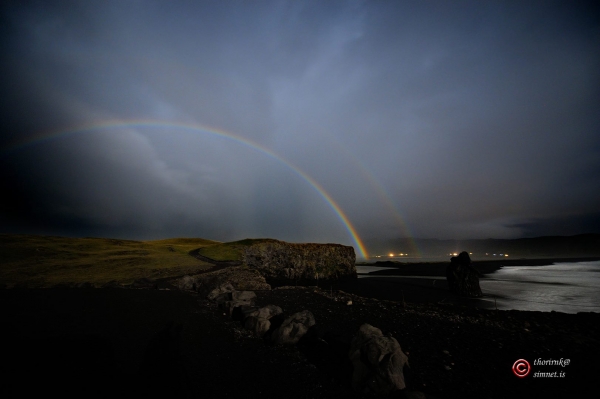
Lunar rainbows are formed in exactly the same way as regular rainbows, except they are formed by moonlight. The fact that moonlight is much fainter than sunlight, and that it is dark at night makes it very hard to see lunar rainbows. Their colours are also usually too faint to note, making them look white. Therefore lunar rainbows are sometimes also called white rainbows. However, the colours always appear in long exposure photographs.
Lunar rainbows are most likely to be seen at or near a full moon, when the brightness of the moonlight is greatest. For a moonbows to appear the moon must be low in the sky, and the sky very dark. This means a moonbow is best observed 2 to 3 hours before sunrise or 2 to 3 hours after sunset. Finally, for a moonbow to appear there needs to have rain or mist in the opposite direction in the sky from the moon.
Þórir has been documenting the Aurora over South Iceland for years now. Below you can view a compilation video of his amazing photos:
Aurora Borealis in the south coast, Iceland from thorirnk on Vimeo.


